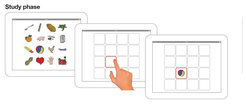Benefits of Active Learning and its Potential to Inform Education
One of the most widespread ideas in education is the virtue of being an active learner. Over more than half a century, a succession of educational theories have each advanced a new image of what it means to be active during learning and the purported benefits relative to passive instructional conditions.
The concept of active learning has grown to encompass a huge variety of instructional techniques, usually referring to some combination of increased physical activity or interaction, deeper processing, elaboration or explanation of material, planning of learning activities, question asking, metacognitive monitoring, and social collaboration. As a result of this diversity, it is difficult to identify the causal factors that lead to performance differences under active learning or to predict whether such effects will generalize to other kinds of activities or materials (Markant, Ruggeri, Gureckis, & Xu, 2016). More research is therefore needed to identify what kinds of self-directed activities are beneficial in particular learning environments and how such benefits depend on underlying cognitive processes and more general developmental factors.
One of Our Active Learning Projects: ALM (Active Learning in Memory)

In the ALM (Active Learning and Memory) study we investigated whether volitional control over the presentation of stimuli leads to enhanced recognition memory in 5- to 8-year-old children. Children were presented with a simple memory game on an iPad: They had to study and remember 4 sets of 16 pictures each. During the study phase, for two of the sets (32 objects in total) children could decide the order and pacing of stimuli presentation (active condition). In this active blocks, children had 90 seconds to study the objects in order to memorize them. To study an object, the child touched the corresponding occluder button once. A red frame appeared for 500ms, followed by the removal of the occluder that revealed the hidden object. Before studying another object, the child had to touch the current object once more to make it disappear behind the occluder.
For the other two sets (32 objects in total), children observed the study choices of another child (yoked condition). In each of the yoked blocks, children were presented with the 90-second video showing the same objects and study pattern of one of the previous children’s active learning blocks, and had the same task (to memorize the objects). The study phase was followed by a test phase, comprised of 8 blocks. In each test block, 16 objects were presented, as in the study blocks (see above). Across the 8 test blocks, 64 objects were old objects the children had studied, and 64 were new objects that were not presented during study. For each block, participants indicated the objects they had studied earlier by touching them on the screen.
We found that recognition performance is better for the objects studied in the active condition as compared to the yoked condition. Furthermore, we found that the memory advantages of active learning persist over a one-week delay between study and test. Our results support pedagogical approaches that emphasize self-guided learning and show that even young children benefit from being able to control how they learn.
Current and Future Directions
Findings from active learning research have general implications for informing educational practice, which is increasingly incorporating the model of inquiry-based learning. In particular, it is crucial to stress the importance of how children learn, besides what they learn, providing children in school with a flexible toolbox of learning heuristics and strategies.
